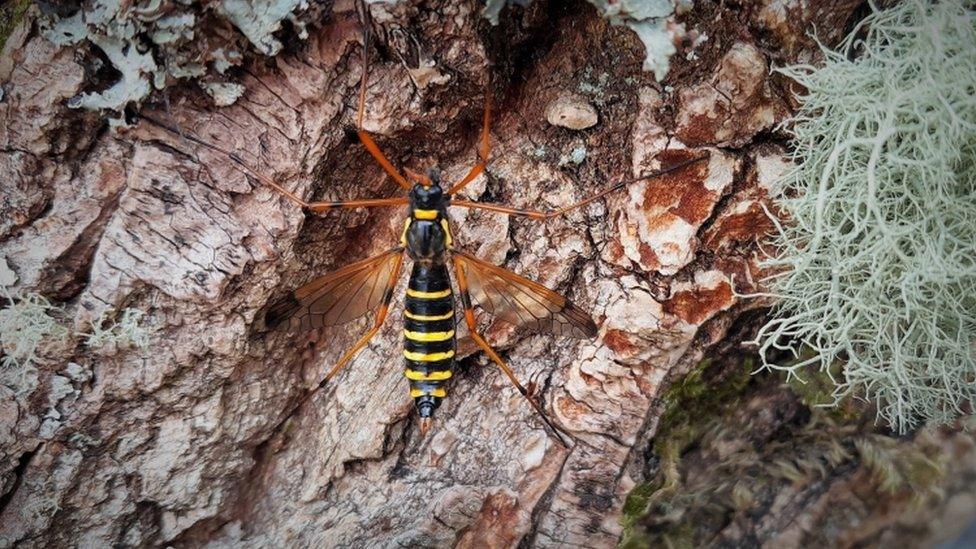The Woodland Trust: Check out the weird woodland wildlife
- Published

Alastair Hotchkiss from the Woodland Trust said: "Now more than ever before, with the climate change and biodiversity crises, do we need to protect and restore the UK's natural environments." This is the wasp banded comb horn, a harmless species of cranefly. They are found in old wooded areas, but it is hard to find in England and even rarer in Wales where it is a priority for conservation action.
Have you ever spotted this when out in the woods? The beefsteak fungus is a woodland fungus that looks like a raw piece of meat. It even oozes out a blood-like substance when it's cut....wow.
Meet the lesser horsehoe bat, which are found to roost in caves, mines and stately homes. They like to eat small moths, midges and mosquitos which are all found in woods.
Alastair Hotchkiss, from the Woodland trust said: "Every species can tell us a story, everything has a role to play, and we have so much still to learn. We must do our best to make sure we don't lose them." This is knothole yoke-moss which is a globally rare type of moss. It only survives at three sites in Britain; New Forest, Epping and Burnham Beeches.
This is a hazel pot beetle, one of the UK's rarest insects. They can only be found in Sherwood Forest, Nottinghamshire now, but they once were found all across the UK. The beetle creates a cocoon to lay eggs that it makes using its own faeces (that's poo!)
This lichen looks like a string of little sausages and has anti-cancer properties. Lichen organism are made from fungi and algae and are very sensitive to air pollution. They are mainly are found in cleaner areas such as Dartmoor in Devon or south-west Wales.
- Published13 April 2022
- Published21 September 2022
- Published22 September 2022
